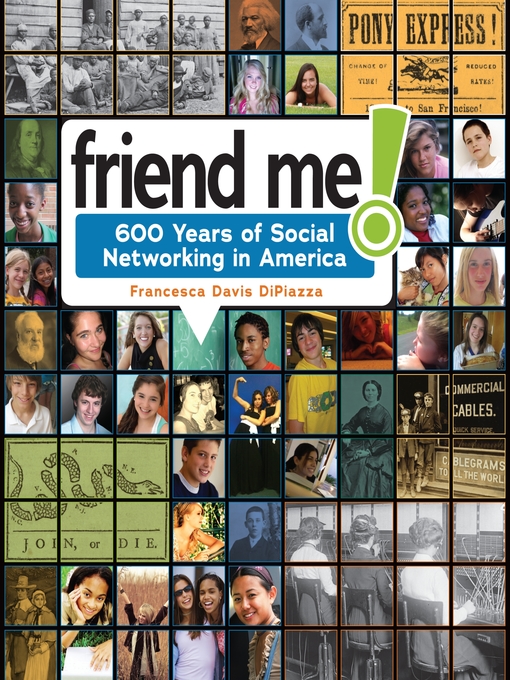-
Creators
-
Publisher
-
Release date
January 1, 2012 -
Formats
-
Kindle Book
-
OverDrive Read
- ISBN: 9781512452921
-
PDF ebook
- ISBN: 9780761388500
- File size: 18221 KB
-
-
Languages
- English
-
Levels
- Lexile® Measure: 1040
- Text Difficulty: 6-8
-
Reviews
-
School Library Journal
April 1, 2012
Gr 6 Up-Arranged chronologically, this volume begins with the Iroquois and describes how Indians appointed knowledge keepers to learn and pass on stories of the tribe, and how they used wampum as a social-networking tool. For the Puritans, the Bible was the guide to activities that brought people together. Following chapters offer accounts of famous Americans, including Ben Franklin, and their role in the efforts of society to develop connectivity among people through newspapers, coffeehouses, the telegraph, mail-order catalogs, neighborhood activities, and so on. Unfamiliar words are defined in context, and numerous captioned black-and-white photos and sidebars add additional appeal to this fascinating topic. Comprehensive source notes provide support for those using the book strictly for research.-Susan Shaver, Hemingford Public Schools, NE
Copyright 2012 School Library Journal, LLC Used with permission.
-
subjects
Languages
- English
Levels
- Lexile® Measure:1040
- Text Difficulty:6-8
Loading
Why is availability limited?
×Availability can change throughout the month based on the library's budget. You can still place a hold on the title, and your hold will be automatically filled as soon as the title is available again.
The Kindle Book format for this title is not supported on:
×- - Kindle 1
- - Kindle 2
- - Kindle DX
- - Kindle Keyboard
- - Kindle 4
- - Kindle Touch
- - Kindle 5
- - Kindle Paperwhite
- - Kindle 7
- - Kindle Voyage
Read-along ebook
×The OverDrive Read format of this ebook has professional narration that plays while you read in your browser. Learn more here.

